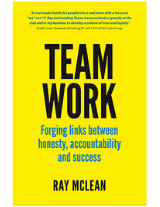Businesses stand to gain by developing high-performing teams, but over-performance can lead to a significant risk for all workers: burnout. In extreme cases, when too many employees burn out, these organisations face a critical talent shortage.
Pressures that increase the risk of burnout can come from other team members or leaders; they can even be self-inflicted. Whatever the source, burnout is a major hindrance for the entire organisation. Let’s look at why employees burn out and what strategies high-performing leaders can use to ensure it doesn’t become an obstacle for effective teams.
One in five Australians don’t know what time they will finish working on a given day.
What causes burnout?
Every team member has his or her own threshold for burnout, but there are many factors that can serve as a catalyst for it. Certain aspects of workplace culture can contribute strongly to this risk – including the neglect of a healthy work-life balance.
This is a particularly notable risk locally. According to the Australia Institute, approximately one in five Australians don’t know what time they will finish working on a given day. When team members let work-related issues bleed into their home lives, it infringes on time that otherwise lets them decompress and jump back onto a task refreshed the next day. On the same note, external pressures can also carry over into the workplace, leading to decreased performance and lower morale.
No matter the cause, it is essential that leaders be able to recognise burnout so they can effectively address it and keep their teams performing at the right level.
The signs of burnout

The signs of burnout aren’t always clear. Effective leaders must learn to pick up on subtle symptoms.
If burnout were easy to recognise, it wouldn’t be nearly as much of a problem. Unfortunately, it isn’t obvious, and other signs of decreased performance often mask it. Research in the Harvard Business Review discusses three of the more subtle signs of burnout.
1. Trying to prove abilities, rather than just applying them
This behaviour reflects a shift from the more organic natural expression of talent to the determined showcasing of it – a sign that the team member is feeling pressure to prove him or herself.
2. Cultivating a specific image while losing a sense of self
Team members can get the notion that they must conform to an established cultural norm in the workplace, hiding their unique abilities and picking up a sense of alienation in the process.
3. Seeing current projects as stepping stones to more meaningful work in the future
When employees begin focusing on meaning as a future expectation instead of a present one, they lose a part of their drive and passion for current work.
Strategies for leaders
Once leaders know what to look for, addressing burnout becomes much more feasible. The most effective approach to this is proactive. Team members and leaders are able to communicate more meaningfully and open up about experiencing pressures when they have strong professional relationships – a key component of the Leading Teams model.
This becomes possible through effective cultural change. When leaders cultivate an environment of genuine care, where admitting to vulnerability and seeking support is allowed, employees have the flexibility to create balance within frameworks of expected behaviour. When teams work to establish these frameworks, they often touch on accountability. This is essential, as it reinforces clear directives about performance expectations while dealing with burnout.
It is up to leaders to reinforce this through modelling these behaviours. As such, they must be able to recognise their own potential sources of burnout and appropriately demonstrate methods for overcoming them.
At Leading Teams, we specialise in developing the high-performance teams and effective leaders needed to promote a positive working environment and reduce the risk of burnout. Contact us today to learn more about our high performance model.



